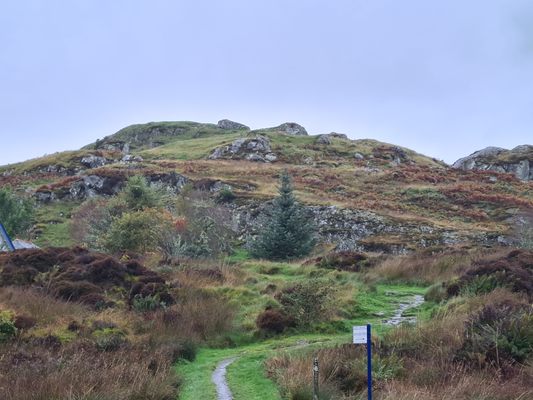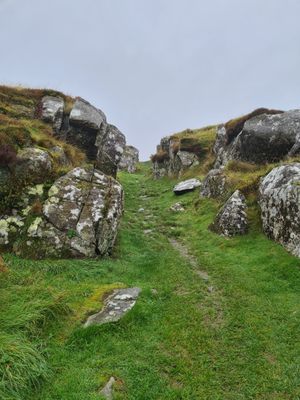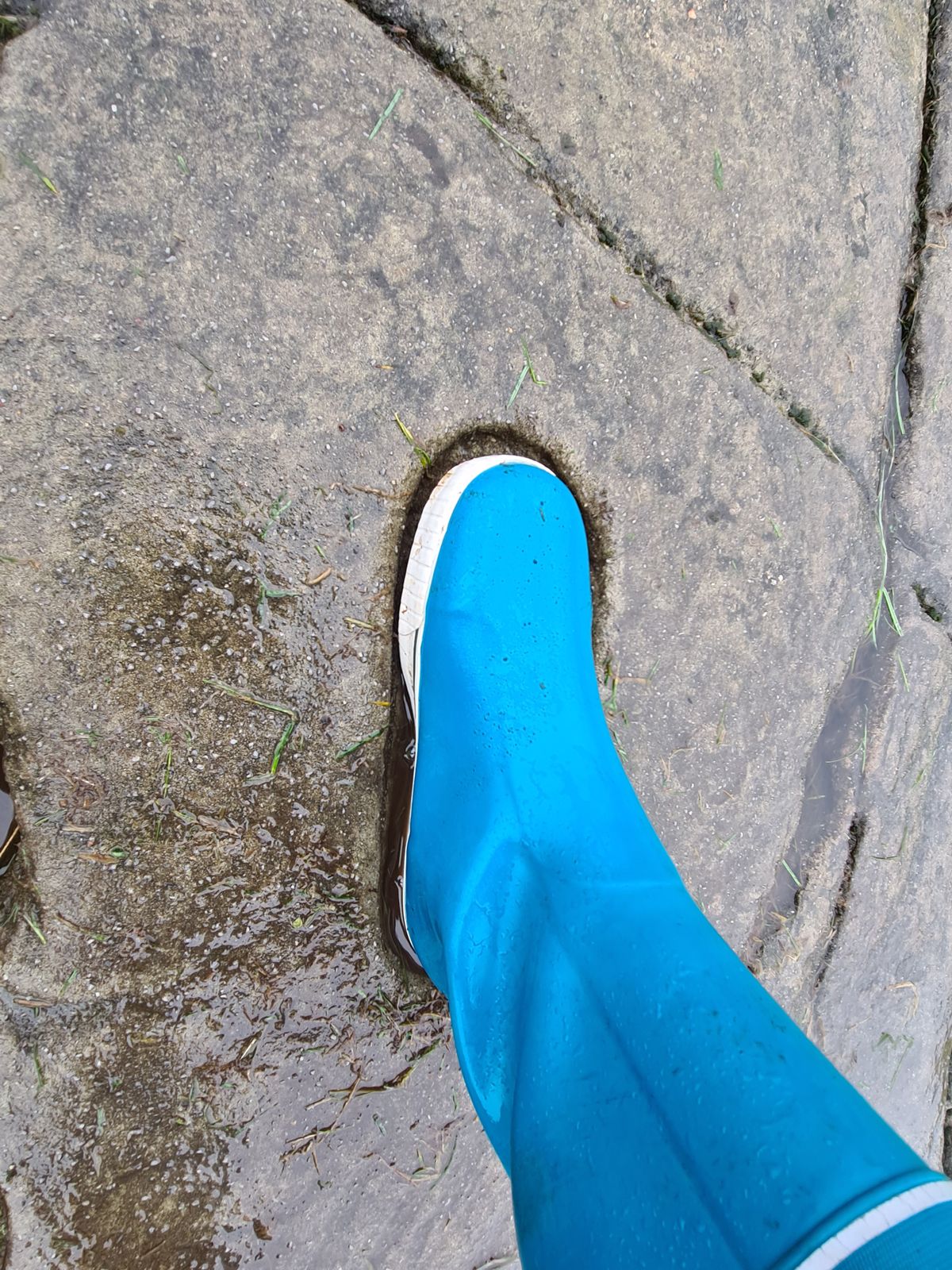About
Dunadd Fort rises tall from what is called Moine Mhor, meaning the "great moss" an expanse of flat boggy land at the southern end of Kilmartin Glen. The site was the center of power for the Gaelic kings of Dál Riata, who ruled Scotland from about 500 to 800. Dunadd is one of the few places referenced in early histories, with its first mention in the year 673.
It is obvious why Dunadd was considered a desirable position to build a fortification and why it went on to become the center of a kingdom. Standing in a natural boggy basin, the fort sits on top of the hillside, which was put to good use as part of the fort's natural defenses. To get to the citadel at the top level of the hill you have to pass through a narrow natural passage, as well as a series of terraces, each with the remains of once-formidable stone walls, one terrace holds the remains of the fort's well ensuring they would have had fresh water even if held under siege.
The citadel enclosure at the summit was surrounded by the strongest defenses of all. Analysis of sea-level changes suggest that the hill was actually an island or at least a promontory in the past, and that it was the receding sea levels that left the fortification open to siege and seizure in the 6th to 7th centuries.
On the terrace immediately below the citadel area of the fort, there is a selection of rock carvings on a boulder just sat in the grass and open to the wild Scottish weather. Here remains the evidence of a basin cut into the rock, an image of a boar, an inscription in the Ogham alphabet and two human footprints which can all easily be picked out on the surface. It is believed that the carved footprints were used during inauguration ceremonies for new kings. When the king placed his foot in the print, it symbolized the new ruler’s dominion over the land. Some give the rock the mystical power of recognizing the rightful ruler of the land.
A range of high-status activities took place at Dunadd, including metalworking and other craft activities. In fact, only one other site has produced as many molds, which is the royal site at Lagore, Ireland. Dunadd Fort has yielded the largest and most diverse range of pottery of any site in northwest Europe. Finds from Dunadd include weapons, tools, quernstones, and imported pottery.
Dunadd Fort was also a center for trade across continental Europe, an activity that provided some of the artifacts found here during excavations.
Even if you have no interest in the history of the site, the views from the top of the hill are worth it alone!
Related Tags
Know Before You Go
There is a free parking area near the base of the hill with a signpost pointing the way.
The hill is exposed, it can be wild and windy, be careful when scrambling about the fort.
It is also often wet and rainy, this can make some of the site slick with mud and cause the grass to be slippy. Good footwear is highly recommended if you visit I'm wet weather.
Flavors of Scotland: Beyond the Haggis
Smoked seafood, single malt whisky, and warm hospitality.
Book NowCommunity Contributors
Added By
Published
August 30, 2023


































